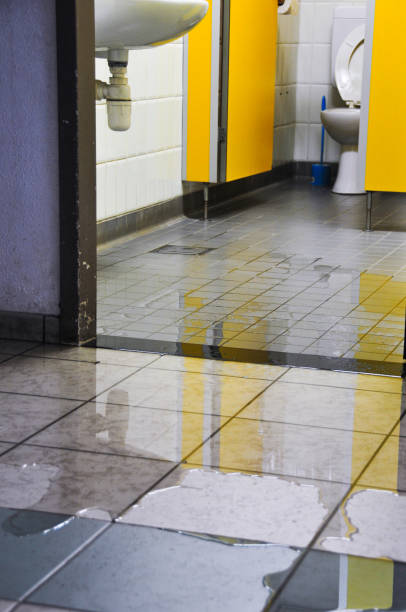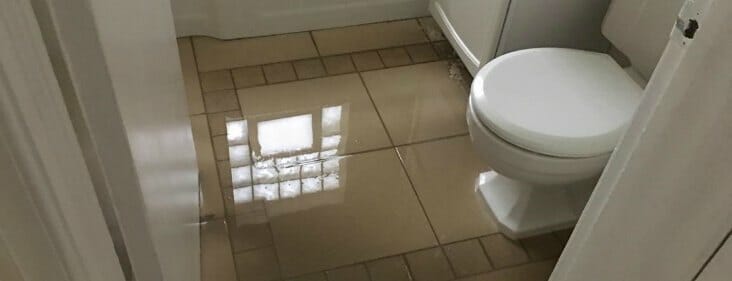Nearly everybody has their unique way of thinking in relation to How to Repair and Prevent Bathroom Water Damage?.

Water damage typically occurs in the shower room as a result of the water made use of daily. Sometimes, the damage could be a little mold and mildew from the shower. Various other times, it's massive damages on your flooring. Whatever it is, it is constantly excellent to recognize the reason as well as stop it before it happens.
This guide will certainly experience several of the typical root causes of water damage in the shower room. We will also analyze what you can do to stop these reasons from harming your restroom. Let's dive in.
These are the common factors you would certainly have water damage in your bathrooms and also exactly how you can detect them:
Excess Wetness
It's great to have that lengthy shower as well as splash water while you dance around and also imitate you're carrying out, however sometimes these acts can create water damage to your restroom.
Splashing water around can trigger water to go to edges as well as form mold and mildews. View how you spread out excess wetness around, and when you do it, clean it up to stop damages.
Cracks in your wall surface tiles
Restroom wall surface ceramic tiles have been particularly created for that purpose. They shield the wall from wetness from people taking showers. Nonetheless, they are not unbreakable.
Sometimes, your washroom wall floor tiles fracture and also enable some dampness to leak into the wall surface. This could possibly destroy the wall surface if you don't take any type of action. If you observe a crack on your wall ceramic tiles, fix it instantly. Do not wait until it destroys your wall.
Overflowing toilets as well as sinks
As human beings, often we make mistakes that might create some water damage in the restroom. As an example, leaving your sink tap on might trigger overruning and damage to various other parts of the bathroom with wetness.
Additionally, a defective commode could trigger overruning. For example, a broken bathroom take care of or other parts of the cistern. When this takes place, it could damage the flooring.
As soon as you discover an overruning sink or commode, call a plumbing technician to aid handle it promptly.
Ruptured or Leaking Pipes
There are numerous pipelines lugging water to various parts of your bathroom. Some pipes take water to the bathroom, the sink, the faucets, the shower, and also many other places. They crisscross the small area of the shower room.
From time to time, these pipes might obtain rustic and also ruptured. Various other times, human activity can create them to leakage. When this happens, you'll find water in the corners of your restroom or on the wall.
To find this, watch out for bubbling walls, molds, or mildew. Call a professional emergency plumbing technician to repair this when it occurs.
Roofing Leakages
Often, the issue of water damage to the shower room may not originate from the shower room. For instance, a roofing leak might cause damage to the bathroom ceiling. You can detect the damages done by checking out the water discolorations on the ceiling.
If you discover water spots on your ceiling, check the roof to see if it's damaged. After that, call a specialist to assist resolve the issue.
Conclusion
Water damage to your washroom can be aggravating. Nonetheless, you can manage it if you avoid some of the reasons stated in this guide. Call a professional emergency situation plumbing professional if you observe any type of severe damages.
How to Repair a Water-Damaged Wall in the Bathroom
All you need to know to repair bathroom wall water damage – from identifying the water source to finishing the repair professionally. If you don’t act quickly to resolve a water damage problem, you could find that it develops into a mold issue and/or cause structural damage to your home. Follow this guide to repair your bathroom before it's too late.
All you need to know to repair bathroom wall water damage
Water damage is a common household problem, and one that, if left unrepaired, can quickly lead to structural problems and health issues. The two most likely rooms where water damage may occur is the bathroom and the kitchen – where water is used often and there is high humidity.
What is water damage?
It is easy to think of water damage as caused by a flood or leaking tap or burst water pipe. However, when water damage is assessed, there are three main categories into which water falls (as classified by the American National Standards Institute). These categories are defined as:
Category 1 Water – ‘Clear Water’
This is sanitary water. There is usually no major threat to health by washing with this water, drinking it, or inhaling if it is streaming. Most water that enters your home will be category 1 water, while most water leaving your home will be either category 2 or 3 water. It may also come from melting snow, rainwater and water tanks.
Damage caused by this type of water can usually be repaired or restored, though this doesn’t mean that there are no potential health issues.
Category 2 Water – ‘Grey Water’
This is contaminated water – sometimes considerably so – and will cause illness if consumed or if it comes into contact with your skin. Water damage in this category is often caused by overflows from toilet bowls, and damage to washing machines and dishwashers. While damaged items might still be repaired or restored after damage by grey water, it is more difficult and more expensive to do so.
If the water damage in your home has been caused by grey water, it is advisable to have repairs made by professionals.
Over time, grey water will deteriorate and become black water.
Category 3 Water – ‘Black Water’
Category 3 water, also known as black water, is highly contaminated and a great risk to health. This may contain raw sewage, heavy metals, and other toxic substances. It will smell terrible.
If this is the water that has caused damage in your bathroom, do not touch it. Stop the water flowing if possible, seal the room and call the experts: it really isn’t worth the risk of ill health and disease that could be fatal. It is very unlikely that items can be repaired or restored if they have been damaged by black water.
https://www.porterscleaning.com/blog/how-to-repair-a-water-damaged-wall-in-the-bathroom/

As a person who reads on How to Repair and Prevent Bathroom Water Damage?, I thought sharing that piece of content was essential. Are you aware of somebody else who is fascinated with the topic? Feel free to promote it. Thank-you for your time spent reading it.
Act fast, call!